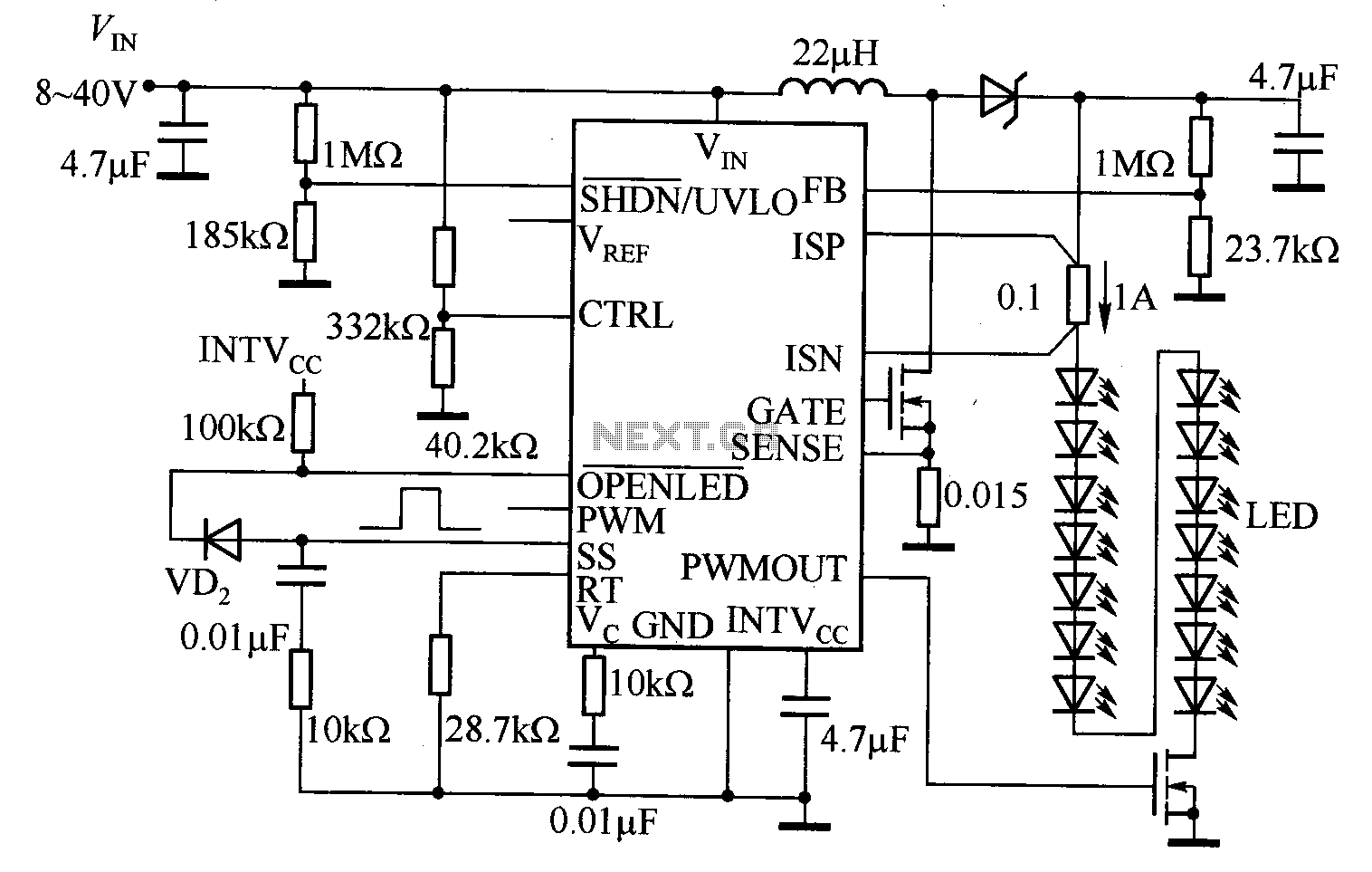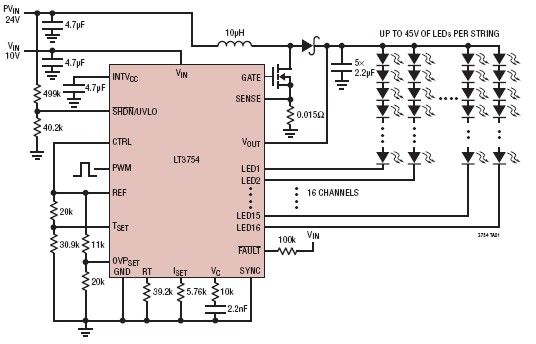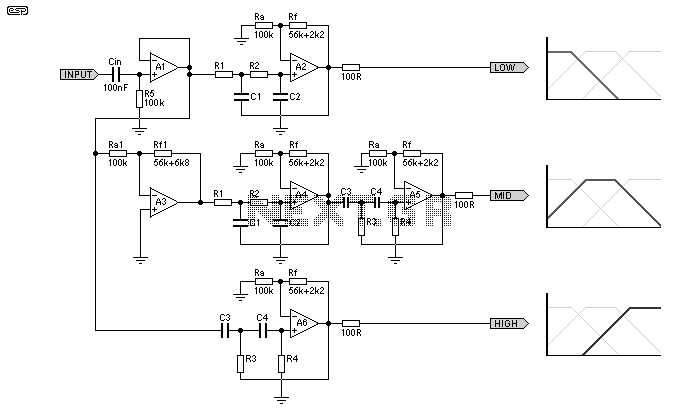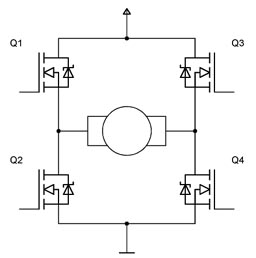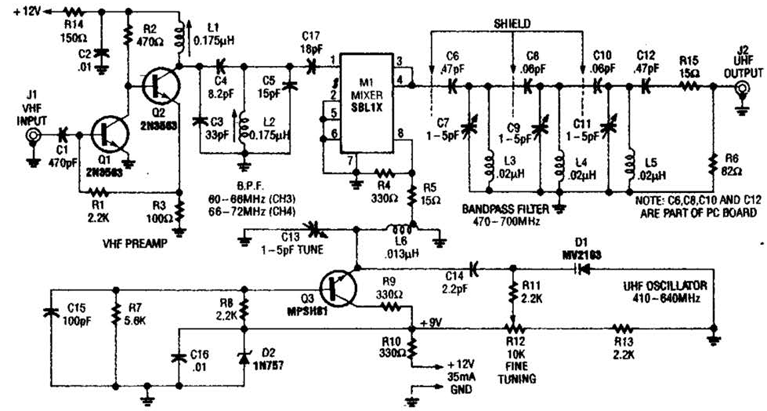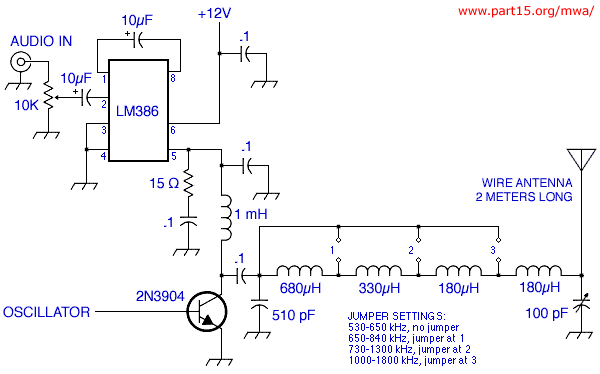
1488kHz signal generator and frequency divider circuit
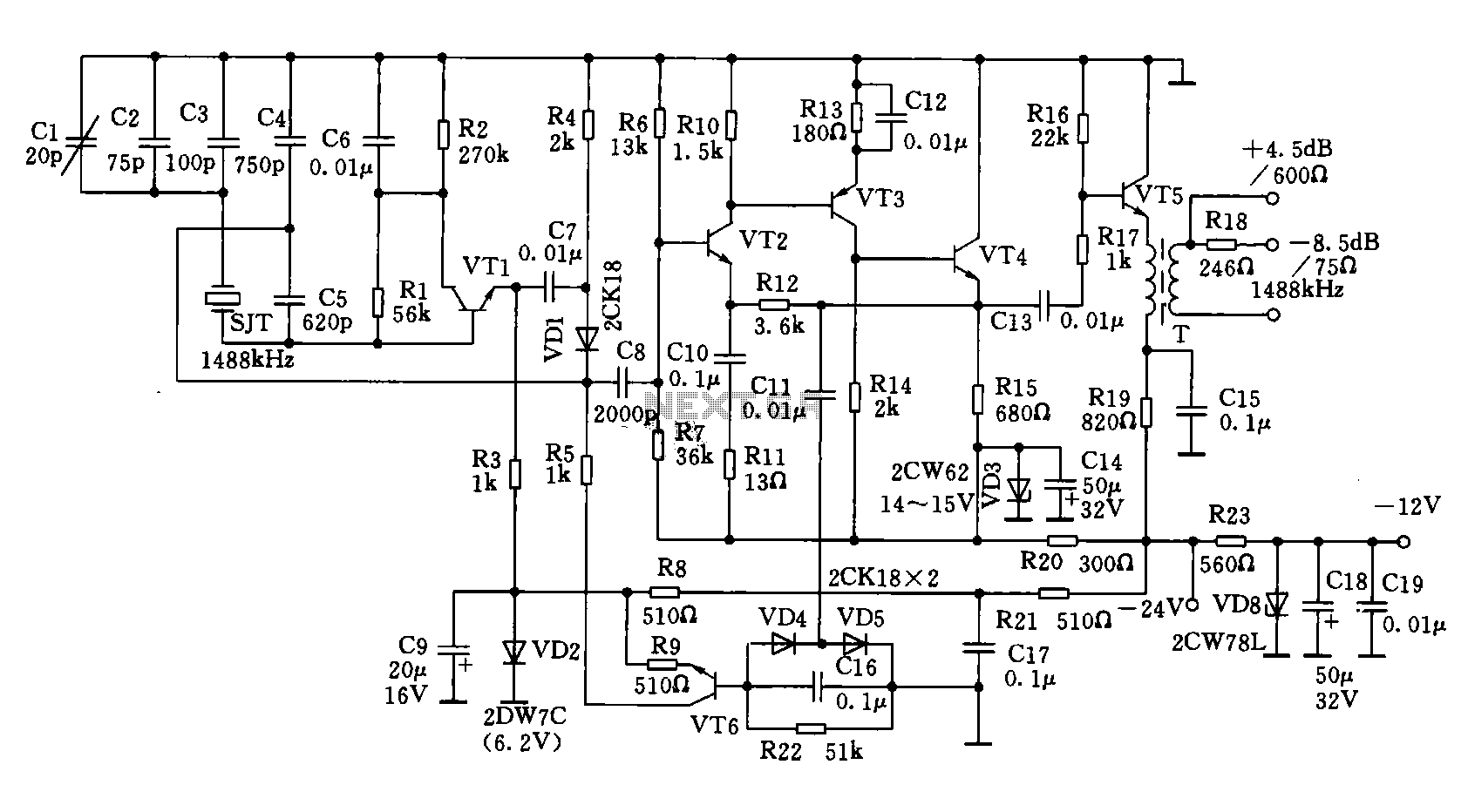
A 1488 kHz master oscillator quartz crystal resonator is utilized for frequency stabilization. The output from the frequency divider provides three different square wave signal outputs at 4 kHz, 12 kHz, and 124 kHz. The circuit includes transistors VT1, VT2, VT4, and VT6, which are 3DG6C with a temperature range of 50 to 85 degrees Celsius. VT3 is a 3CG3D transistor, also within the same temperature range. VT5 is a 3DGl308 transistor, with a temperature range of 65 to 115 degrees Celsius. The circuit features a variable component T, which is a pot-shaped ferrite of model MTT22F. Inductor L1 consists of 0.35 mm high-strength wire wound 36 turns, while inductor L3 consists of 0.31 mm high-strength wire wound 21 turns. Integrated circuits A1 to A9 are SG8228 D-type CMOS flip-flops, each containing two D flip-flop components. Integrated circuits A10 and A11 are 5G8058 type gates, with each circuit containing two gates. The values of other components are indicated in the annotations, with no special requirements specified.
The described circuit employs a quartz crystal resonator as a master oscillator, which is fundamental for generating stable frequencies. The 1488 kHz frequency serves as the primary reference point, enabling the division of this frequency into lower frequencies of 4 kHz, 12 kHz, and 124 kHz through a frequency divider circuit. This is achieved using various transistors, which are critical in amplifying and switching the signals within the circuit.
The transistors specified (3DG6C, 3CG3D, and 3DGl308) are essential for managing the current and voltage levels throughout the circuit. Their operational temperature ranges ensure reliability and performance stability under varying environmental conditions. The variable component, a pot-shaped ferrite, allows for tuning and adjustment of the circuit's inductance, which can be crucial for fine-tuning the output frequencies.
Inductors L1 and L3 are constructed from high-strength wire, providing the necessary inductance values for the circuit's operation. The number of turns in each inductor is carefully calculated to achieve the desired inductance, which interacts with the capacitive elements to set the resonant frequencies.
The use of SG8228 D-type CMOS flip-flops in the circuit provides a robust digital logic capability, enabling the creation of precise square wave outputs. Each flip-flop can be configured to perform various functions, such as frequency division and signal conditioning, essential for generating clean and stable outputs.
The 5G8058 type gates included in the design further enhance the logic capabilities of the circuit, allowing for various logical operations that can be implemented to control the flow of signals. The annotations provide additional details regarding the values and specifications of other components, ensuring that the circuit can be constructed with the necessary precision and reliability. Overall, this circuit design is well-suited for applications requiring precise frequency generation and signal processing.Used 1488kHz master oscillator quartz crystal resonator frequency stabilization, the output from the frequency divider dividing, obtained 4kHz, 12kHz, 124kHz three different square wave signal output. Circuit is shown. Transistor VTl, VT2, VT4, VT6: 3DG6C, = 50 ~ 85, VT3: 3CG3D, = 50 ~ 85, VT5: 3DGl308, = 65 ~ 115. Variables included T: using pot shaped ferrite, model MTT22F. Ll-2 µ0.35mm high strength wire, wound 36 turns. L3-4 µ0.31mm high strength wire, wound 21 turns. Al ~ A9: the SG8228 D-type CMOS, flip-flops, each integrated circuit with two D flip-flops components. Al0, All: 5G8058 type of door and integrated circuits, each circuit has two doors and components. Value of another element is shown in annotation, no special requirements.
The described circuit employs a quartz crystal resonator as a master oscillator, which is fundamental for generating stable frequencies. The 1488 kHz frequency serves as the primary reference point, enabling the division of this frequency into lower frequencies of 4 kHz, 12 kHz, and 124 kHz through a frequency divider circuit. This is achieved using various transistors, which are critical in amplifying and switching the signals within the circuit.
The transistors specified (3DG6C, 3CG3D, and 3DGl308) are essential for managing the current and voltage levels throughout the circuit. Their operational temperature ranges ensure reliability and performance stability under varying environmental conditions. The variable component, a pot-shaped ferrite, allows for tuning and adjustment of the circuit's inductance, which can be crucial for fine-tuning the output frequencies.
Inductors L1 and L3 are constructed from high-strength wire, providing the necessary inductance values for the circuit's operation. The number of turns in each inductor is carefully calculated to achieve the desired inductance, which interacts with the capacitive elements to set the resonant frequencies.
The use of SG8228 D-type CMOS flip-flops in the circuit provides a robust digital logic capability, enabling the creation of precise square wave outputs. Each flip-flop can be configured to perform various functions, such as frequency division and signal conditioning, essential for generating clean and stable outputs.
The 5G8058 type gates included in the design further enhance the logic capabilities of the circuit, allowing for various logical operations that can be implemented to control the flow of signals. The annotations provide additional details regarding the values and specifications of other components, ensuring that the circuit can be constructed with the necessary precision and reliability. Overall, this circuit design is well-suited for applications requiring precise frequency generation and signal processing.Used 1488kHz master oscillator quartz crystal resonator frequency stabilization, the output from the frequency divider dividing, obtained 4kHz, 12kHz, 124kHz three different square wave signal output. Circuit is shown. Transistor VTl, VT2, VT4, VT6: 3DG6C, = 50 ~ 85, VT3: 3CG3D, = 50 ~ 85, VT5: 3DGl308, = 65 ~ 115. Variables included T: using pot shaped ferrite, model MTT22F. Ll-2 µ0.35mm high strength wire, wound 36 turns. L3-4 µ0.31mm high strength wire, wound 21 turns. Al ~ A9: the SG8228 D-type CMOS, flip-flops, each integrated circuit with two D flip-flops components. Al0, All: 5G8058 type of door and integrated circuits, each circuit has two doors and components. Value of another element is shown in annotation, no special requirements.
Warning: include(partials/cookie-banner.php): Failed to open stream: Permission denied in /var/www/html/nextgr/view-circuit.php on line 713
Warning: include(): Failed opening 'partials/cookie-banner.php' for inclusion (include_path='.:/usr/share/php') in /var/www/html/nextgr/view-circuit.php on line 713
